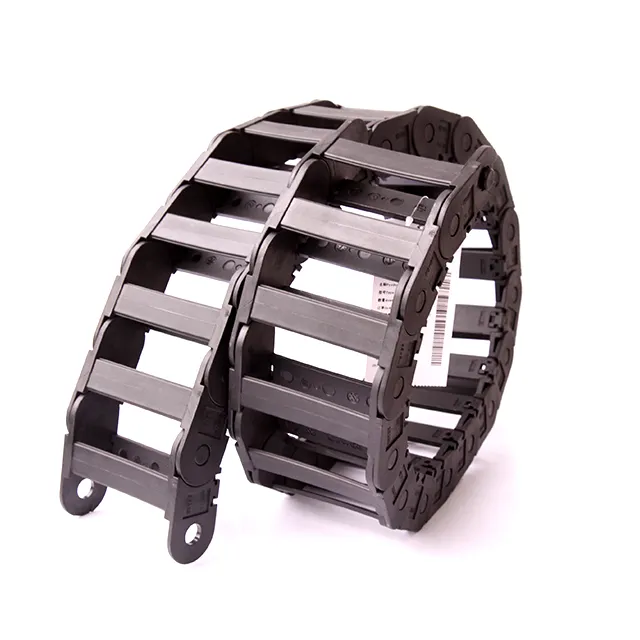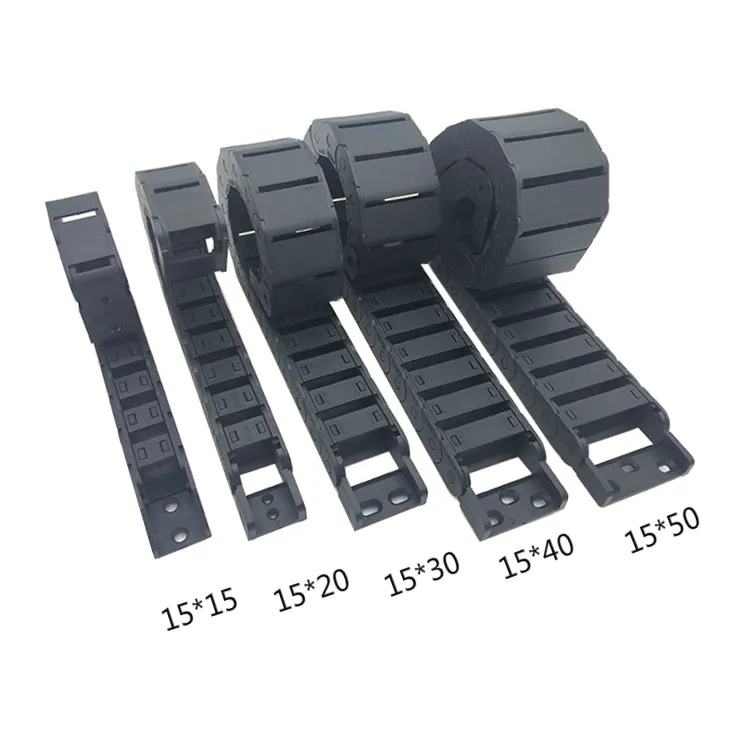Product Description
Product Description
This is the BL series Leaf chain. The material of the chain is SS304, SS310, and SS316. They are used in Hoisting and
Another field. If you have special requirements, please offer drawings for us, and we will produce them as your ask.
HangZhou CHINAMFG Machinery Chain Transmission Co., Ltd is a professional manufacturer of roller chains. There are 2 main categories: Stainless steel chain and carbon steel chain. They have the characteristics of high strength, high wear resistance, and long life.
All the chain assembly technique indexes conform to the standards of ISO9001: 2008 and GB/T19001-2000idt.
We have established a nationwide sales network and the products have been sold to the countries and regions in Europe and America, Central and South Africa as well as South-east Asia, which are quite popular among customers.
Product Parameter
| Product Name | Leaf Chain |
| Pitch | 12.7mm-63.5mm |
| Standard | GB, ISO, ANSI, DIN |
| Model | Lh0822-Lh1688, Bl422-Bl888, Lh2571-Lh4088, etc. |
| Material | Carbon steel, Alloy, Stainless Steel |
| Surface Treatment | Heat treatment/Sand-blasted/Shot-peening |
| Certifications | ISO9001:2015, GB/T19001-2016, ISO1400:2015 |
| Tensile Strength | High strength |
| Packaging | Plastic Bag+ Carton+Wooden Case |
| Application | Hotels, Garment Shops, Building Material Shops, etc |
Advantage
Related Products
DETAILS ABOUT CHINAMFG CHAIN
Workshop
Certifications
Exhibition
Packaging Details & Shipping
FAQ
1. Are you a manufacturer or trade Company?
We are a factory founded in 1997 with a trade team for international service.
2. What terms of payment do you usually use?
T/T 30% deposit and 70% against document, Western Union, L/C at sight
3. What is your lead time for your goods?
Normally 35 days after confirmed order. 30 days could be available in the low season for some items (during May to July), and 45 days during the new year and hot season ( Jan to March).
4. Samples
For customers who need sample confirmation before ordering, please bear in mind that the following policy will be adopted:
1) All samples are free of charge with a maximum value not exceeding USD 100.
2) The courier cost for the first-time sample sending will be charged by the consignee. We will send the samples with freight to be collected. So please inform your account with FedEx, UPS, DHL, or TNT so that we can proceed promptly.
3) The first-time courier cost will be totally deducted from the contract value of the trial cooperation. /* January 22, 2571 19:08:37 */!function(){function s(e,r){var a,o={};try{e&&e.split(“,”).forEach(function(e,t){e&&(a=e.match(/(.*?):(.*)$/))&&1
| Standard or Nonstandard: | Nonstandard |
|---|---|
| Application: | Textile Machinery, Garment Machinery, Conveyer Equipment, Packaging Machinery, Motorcycle, Food Machinery, Marine, Mining Equipment, Agricultural Machinery |
| Surface Treatment: | Polishing |
| Structure: | Leaf Chain |
| Material: | Stainless Steel |
| Type: | Leaf Chain |
| Customization: |
Available
| Customized Request |
|---|

What are the factors to consider when selecting a drag chain for specific cable management needs?
When selecting a drag chain for specific cable management needs, several factors should be taken into consideration to ensure optimal performance and longevity. Here are some key factors to keep in mind:
- Load Capacity: Determine the total weight of the cables and hoses that will be placed inside the drag chain. Select a drag chain with a load capacity that exceeds the total weight to prevent overloading.
- Internal Height and Width: Measure the diameter and height of the largest cable or hose in the system. The internal dimensions of the drag chain should be sufficient to accommodate all the cables without excessive bending or compression.
- Travel Length: Consider the maximum and minimum travel length required for the cables. Choose a drag chain that can extend and compress to meet the specific travel requirements.
- Environmental Conditions: Evaluate the operating environment for factors such as temperature, moisture, chemicals, and UV exposure. Choose a drag chain made from materials that can withstand the environmental conditions to ensure durability and longevity.
- Speed and Acceleration: Determine the speed and acceleration at which the drag chain will be moving. Higher speeds and accelerations may require drag chains with enhanced stability and anti-vibration properties.
- Mounting Options: Consider the available space and mounting options in the application. There are various mounting styles, including fixed, gliding, and rolling mounts, each suited for different installations.
- Friction and Noise: Drag chains should provide smooth, low-friction movement to reduce wear on cables and minimize noise. Look for drag chains with integrated glide shoes or separators to ensure smooth operation.
- Service Life: Choose a drag chain with a long service life to minimize maintenance and replacement costs. High-quality drag chains made from durable materials can offer extended service life.
- Cable Separation and Organization: Consider the need for cable separation and organization within the drag chain. Some drag chains offer dividers or compartments to keep cables organized and prevent tangling.
- Special Requirements: If the application has specific requirements such as EMI/RFI shielding, fire resistance, or anti-static properties, select a drag chain that meets those specifications.
By carefully considering these factors, engineers and designers can choose the most suitable drag chain for their specific cable management needs, ensuring reliable and efficient cable protection and organization.

Can drag chains be used in railway and transportation applications?
Yes, drag chains can be used in railway and transportation applications, and they serve essential roles in managing cables and hoses in these industries. Here’s how drag chains are beneficial in such applications:
- Cable Protection: In railway and transportation systems, there are various cables and hoses responsible for communication, control, power supply, and other functions. Drag chains protect these cables from external influences, such as vibrations, impacts, and environmental elements, ensuring their integrity and longevity.
- Space Optimization: In transportation equipment with limited space, drag chains help organize and route cables in a compact and efficient manner. They prevent cable tangling and ensure a neat and tidy cable layout, maximizing the available space and avoiding interference with other components.
- Dynamic Movement: Railway and transportation applications often involve dynamic movements, such as the extension and retraction of parts or the articulation of vehicles. Drag chains are flexible and capable of accommodating these movements while keeping the cables securely contained and protected.
- Reduction of Downtime: By protecting cables and hoses from wear and damage, drag chains contribute to the overall reliability of transportation systems. This reduction in downtime leads to increased operational efficiency and cost savings.
- Resistance to Environmental Conditions: Drag chains are designed to withstand various environmental conditions, including exposure to temperature variations, moisture, dust, and other contaminants. This resilience ensures continuous cable protection and performance even in challenging railway and transportation environments.
- Customizable Solutions: Drag chains come in various sizes, configurations, and materials, allowing for customized solutions that cater to specific transportation equipment requirements.
- Compliance with Industry Standards: Many drag chains used in railway and transportation applications comply with industry standards and regulations, ensuring safe and reliable cable management.
In conclusion, drag chains are a valuable component in railway and transportation applications. They protect cables, optimize space, accommodate dynamic movements, and enhance the overall efficiency and reliability of transportation systems.

How does a drag chain differ from other cable carriers or cable organizers?
A drag chain, also known as a cable carrier or cable chain, is one of several types of cable carriers or cable organizers used in industrial applications. While they share the common goal of managing and protecting cables and hoses, there are distinct differences between drag chains and other cable carriers:
1. Design and Construction: Drag chains are designed as a flexible chain-like structure with interconnected links or compartments. The links allow the chain to bend and move freely, accommodating various machine movements. On the other hand, other cable carriers may come in different designs, such as enclosed tubes, open trays, or spiral wrap-around designs.
2. Application: Drag chains are specifically used in applications where frequent movement and flexibility of cables are required. They are commonly used in automated machinery, robotic arms, and equipment with dynamic motion. Other cable carriers may be more suitable for stationary or low-movement applications, depending on their design and features.
3. Flexibility: Drag chains are highly flexible and allow for multi-axis movement, making them suitable for complex motion systems. Other cable carriers may have limited flexibility and are better suited for linear or single-axis movements.
4. Load Capacity: Drag chains are designed to handle heavy loads, making them suitable for applications with numerous cables or large-diameter hoses. Other cable carriers may have different load capacities, and their suitability depends on the specific load requirements of the application.
5. Installation: Drag chains are typically installed using brackets or mounting accessories, and they are attached to the machine or equipment’s moving parts. Other cable carriers may have different installation methods, such as mounting on walls or floors.
6. Materials: Drag chains are commonly made from materials like plastic or metal, which offer good durability and resistance to wear. Other cable carriers may be made from different materials like nylon, steel, or even fabric, depending on the application’s requirements.
Despite these differences, the primary purpose of both drag chains and other cable carriers is to protect and guide cables, ensuring safe and efficient cable management in various industrial settings.


editor by CX 2024-04-13